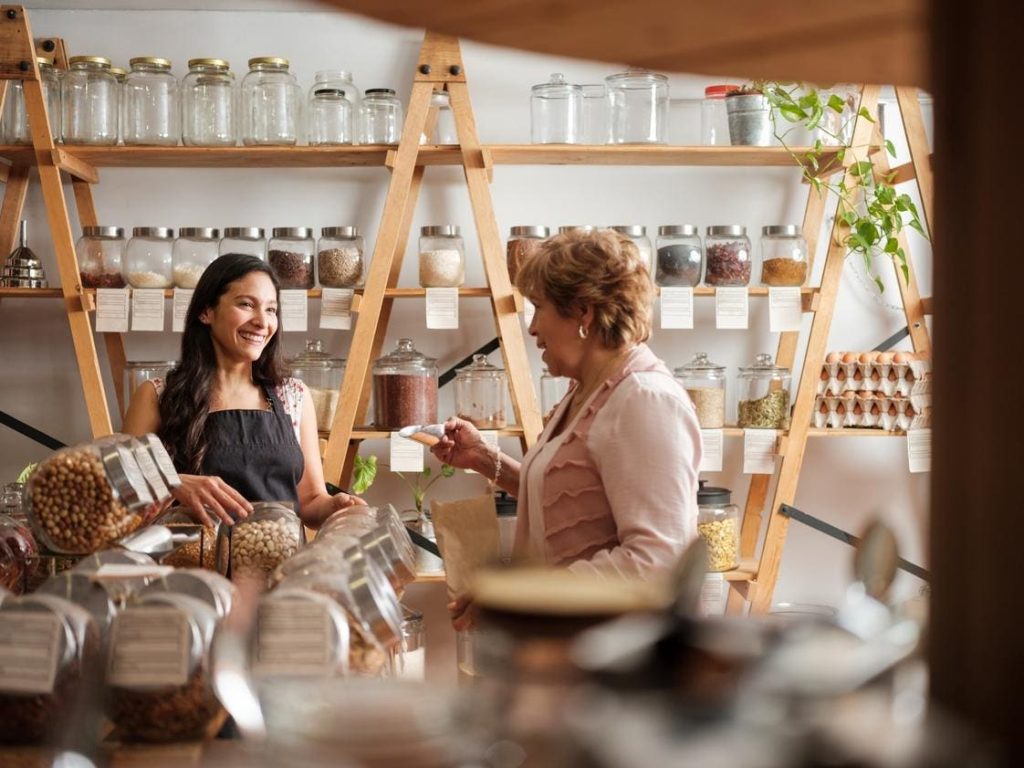Owner – The Mountain Shoppe. Follow me on LinkedIn.
Developing the brick-and-mortar customer experience for your small business is an exciting, monumental and sometimes overwhelming challenge. There are countless factors that play a part in orchestrating a quality retail store, and you want to be sure the elements you set in motion have captured customers’ attention to increase customer retention. But where to begin? A simple way to get started is to think about your store experience like a three-course meal and building it out from there. Think through the following three elements and how you can apply them to your brand to create the most engaging customer experience.
1. The Appetizer: Cultivating An Entryway Aura
Serving as the introduction to your store, this is a great place for an attention-grabbing element for patrons to interact with. An arrangement for a photo op, an activity challenge that can reward customers, or simply having clean sightlines with a killer candle burning. This is also the area to provide customers with all things necessary to be comfortable and informed while browsing. A drink cooler to provide refreshments, branded shopping totes to carry smaller merchandise and any welcome literature you may have regarding the store. Your patrons should walk away from the entryway anxious for more and excited for whats to follow—just like a good appetizer.
2. The Entrée: Experiencing The Main Store
Your products and their displays need to function as the main source of attraction, and highlighting them further by incorporating personalized elements can deepen customer engagement. If they’re engaged, they’re curious. This will open the door to have conversations that are more organic as opposed to a cold approach. When you start making sales to patrons who had no intention on making a purchase, you’ll see a noticeable difference in your revenue generated.
Personalization methods will certainly vary based on the type of merchandise you sell, but the one method that can be applied across all retail venues is integrating sensory-based elements into your displays/products/store. There are numerous studies on the effectiveness of sensory marketing. Humans are curious by nature, and appealing to our senses will strengthen the emotional connection to the product. So how do we tie in the senses into our products?
Hear: If you haven’t read anything on the effect music has on one’s mood, you may be living in a cave. Make sure your store is playing all the good vibes. Certain genres may coexist with your brand better than others, but nonetheless make sure you have some upbeat tunes from whatever genre it is you play in the store. For a personalized experience, offer the ability for patrons to request specific songs. Retail solutions are a great place to start.
Smell: It does not matter how sexy a store looks or what products are in it, if customers walk in and the scent is uninviting or overwhelming, chances are they will not be looking long or maybe even at all. Of all the senses, smell is associated with evoking memories more than any other, so don’t underestimate its marketing power! Keep it refreshing, tailored to the appropriate season and not overbearing. Consider scent marketing solutions to help you get started.
Sight: If your merchandise is shelving-based, such as giftware, home goods, souvenirs or anything of this nature, having clean aesthetics for your products to be displayed on is key. I’m a true believer in that the way your product is displayed is as important—if not more important—than the actual product itself. For example, I find slatwall display walls to be an awesome product that allows for modular configuration of all types of shelving and hooks, etc. As a small business, this saves valuable time when putting displays together.
Touch: Touch goes beyond simply picking up items with your hands. Touch is climbing onto that new ATV, rolling some putts with the latest model or scrolling on the brand new phone that just dropped. All of those are engaging experiences that create a connection to the item. Being an outfitter in the furniture industry (specifically handcrafted wood furniture), I want my clientele to be able to walk through our doors and “try everything on.” Whether that’s feeling the drawers of a night stand glide smoothly until they close softly or running their hand across the grain of a walnut dining table, I believe that emotional connection created from touch is something no online store can rival. My team and I personalize this experience by providing all product options in the form of physical samples and swatches right at their fingertips.
3. Dessert: Finishing Up At Checkout
Wrapping it all up at the checkout desk, this is where you put a bow on their experience. There’s a multitude of essential elements to have here. Branded bags for purchased goods, point of purchase displays for add on products, literature on products you have in store so they can browse further at home and business cards with contact information for follow up. A nice touch that converts casual customers into frequent clients is offering a loyalty program. The checkout process should be smooth, sweet and send patrons home feeling satisfied—just like dessert.
Creating the retail experience can be daunting, but breaking it down into these three elements will help simplify the process. Generate excitement at the entry, create personalized experiences with sensory-based marketing strategies in the store and then put the cherry on top at checkout. Happy selling!
Forbes Business Council is the foremost growth and networking organization for business owners and leaders. Do I qualify?
Read the full article here










